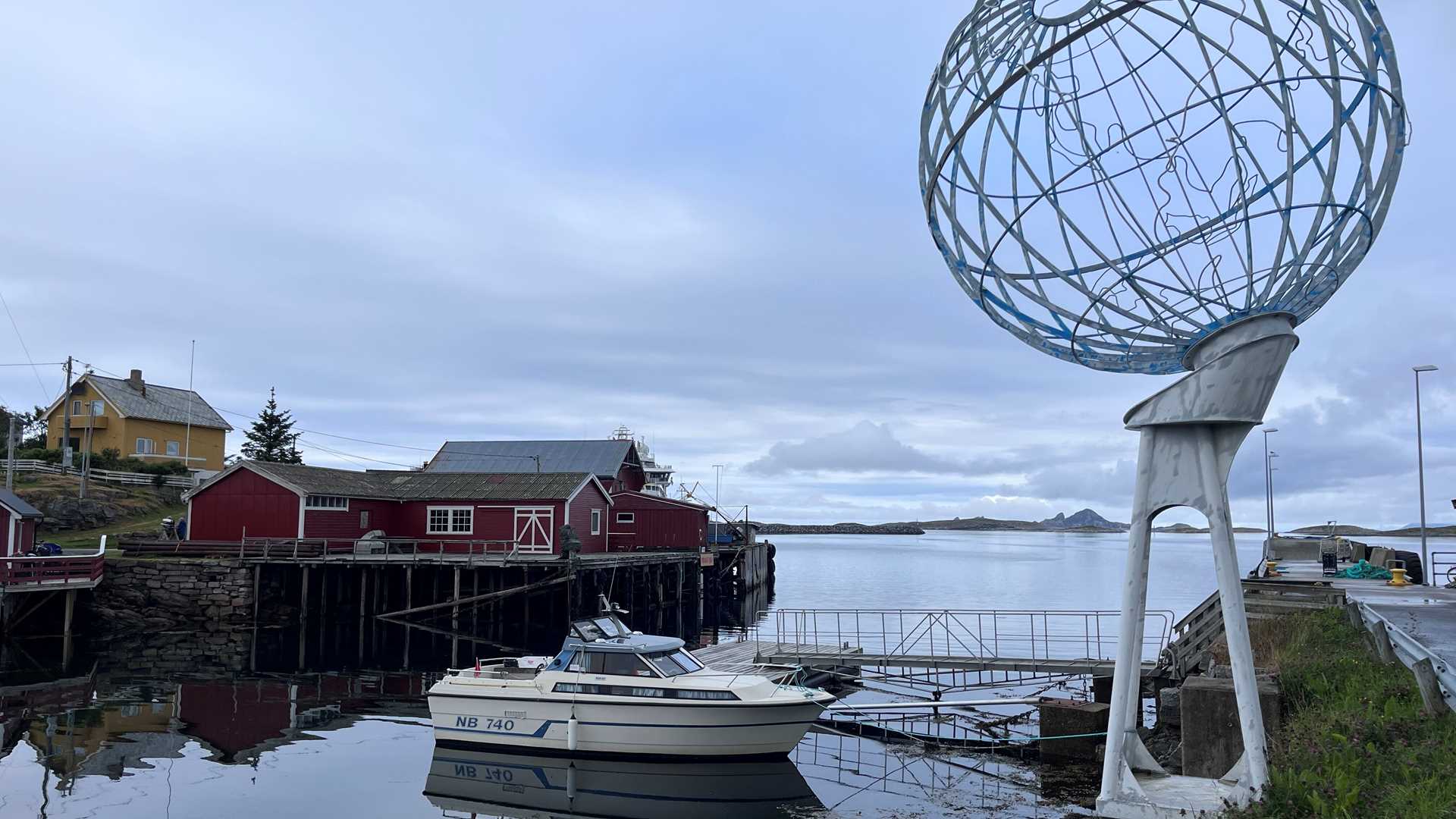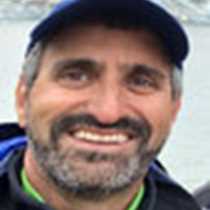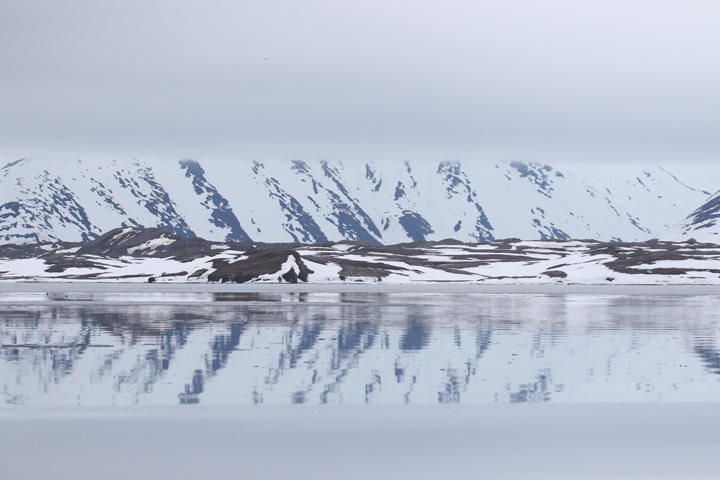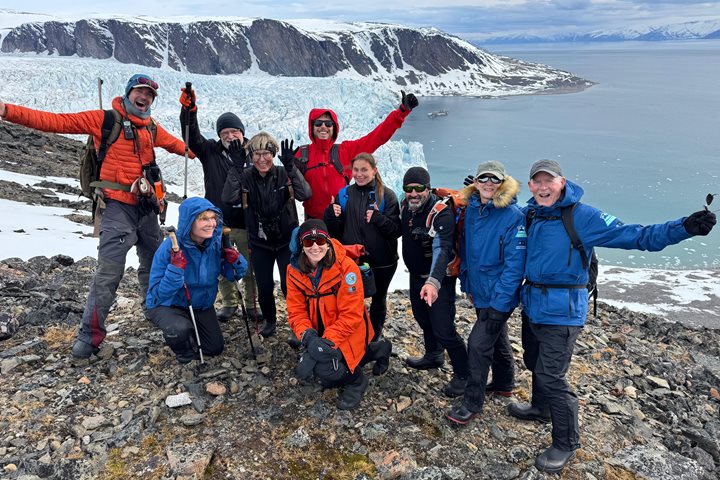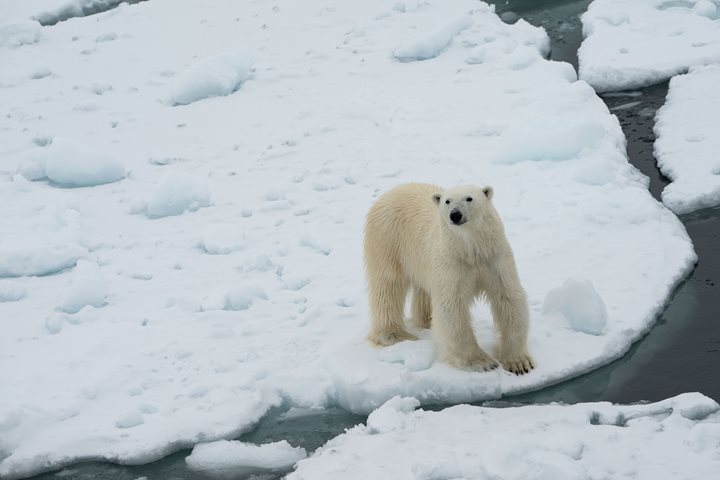Our voyage of discovery of Norway’s famous fjords continued today with kayaking and Zodiac cruising in Melfjord and a visit to the picturesque island of Traena, located on the Arctic Circle. A misty, atmospheric morning opened to reveal intertidal organisms, seabirds, seals, waterfalls, and a glaciated landscape in calm fjord waters beneath sheer rock walls. On Traena, we visited a globe monument to the Arctic Circle, a local museum, a quaint chapel, the local pub where we were treated to homemade fishcakes, and the small wooden community church where we enjoyed a piano recital by local talent.
Below, two of our Grosvenor Teacher Fellows reflect on their impressions of our voyage and how their experiences might influence their teaching practices.
Bradley Quentin, Grosvenor Teacher Fellow, writes…
I’m here for the weather.
Our first day out of Longyearbyen greeted us with cloudless cerulean skies, cobalt blue seas, and rocky black slopes streaked with gleaming snow patches. A few days later, we arrived in the Seven Islands. Dark hills scraped against low, leaden clouds while luminous white and blue slabs of ice drifted in black waters. We have had bone-chilling winds and fogs that obliterated the line between sea and sky as National Geographic Endurance crunched its way through the frozen ocean. Deep in Tysfjorden, we hiked through a riot of wildflowers and bees with warm sun on our shoulders.
This morning, we entered Melfjord. It was overcast with ragged bits of cloud clinging to the steep sides of the fjord. From time to time, the clouds parted briefly to reveal dark peaks brooding over the silvery gray waters. After breakfast, kayaks were deployed, and we set out across the glassy surface in a gentle mist to explore the little islands where we had stopped. Gulls, common terns, and oystercatchers flew this way and that. The terns nesting on one of the islands raised a terrific racket when the gulls got too close. The combination of remarkably clear water and gray skies allowed us to look into the depths, where we spied sea stars in shades of red and purple. Innumerable sea urchins lay among large clumps of brown kelp and heaps of black mussels.
On this expedition, we have encountered all kinds of weather. Whether it is clear and cold or gray and rainy, the weather is an important part of each day’s story. It seems to me that the Arctic landscapes, more than most, look and feel dramatically different based on the conditions. I am grateful to have seen this place in all its sunny, windy, rainy, foggy, icy beauty.
I am here for the weather, whatever weather the Arctic has for us.
Chris Speck, Grosvenor Teacher Fellow, writes…
Embarkation on July 13 was immediately followed by the arrival of a blue whale spouting and fluking off the bow. You couldn’t write a better opening ceremony. What has continued to amaze me about this experience as a Grosvenor Teacher Fellow is the combination of suspense and inevitability. I knew the Lofoten Islands would be spectacular, but I was surprised at just how striking they were. I knew we would encounter wildlife on this trip, but I continue to be shocked at its number and diversity.
As a middle school teacher, I will take the experiences and images from this trip into my curriculum. The Arctic will now be a part of my lessons on food webs, adaptations, and evolution. The struggles of the Indigenous Sami mirror those of various Indigenous groups in my own state. This voyage has shown that a place is not only the land and the creatures that call it home but also how we as people interact with it and each other.
Many assume the Arctic has a limited palette. White polar bears, white arctic terns, white kittiwakes, and grey seals. I was happily surprised to see a palette that defied my expectations. Eons old, blue ice dappled glaciers. Purples, yellows, and even bright red lichens pepper the landscape.

